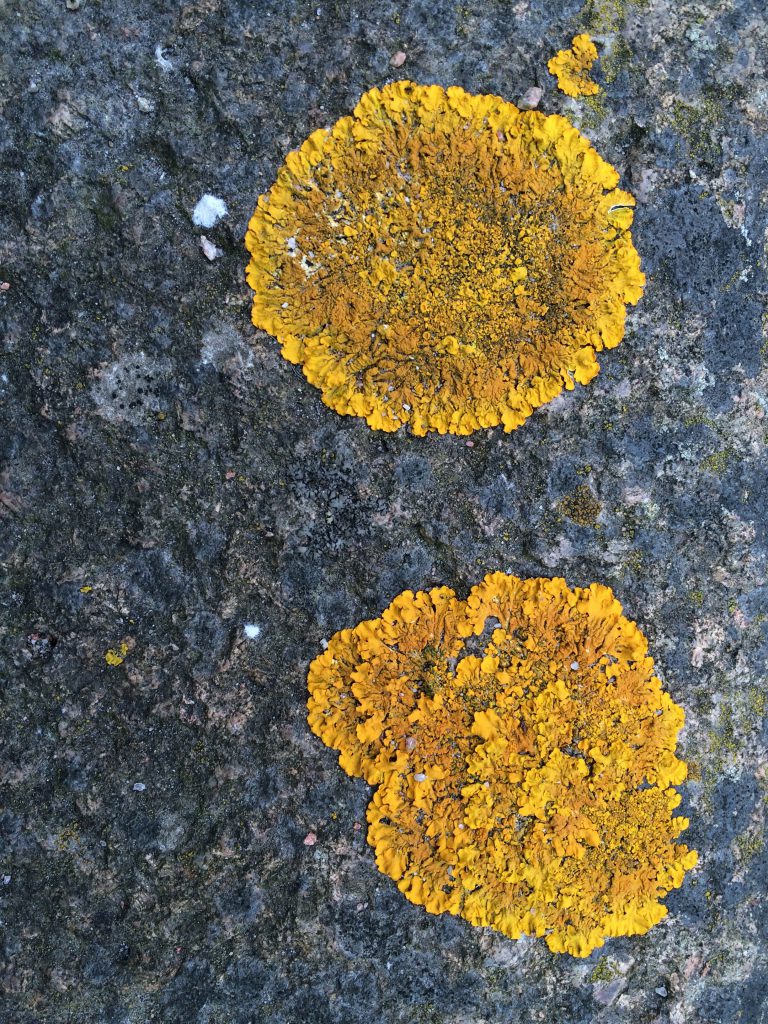November 10, 2017
Two years ago I was asked to bring a companion species. Living life without pets and even though they were not occupying my skin at that instance I turned to lichens as close friends. They live everywhere around us and with us. Most of the time they remain unnoticed. Our eyes have to be directed towards them.
My first vivid memory of these crusty stains is my grandfather staring at a tree trunk of an apple tree planted on my youngest brothers birth. Next to the thousands of ants who walked up and down the tree trunk, there were miniature grey antlers growing on the stem. They disappeared for decades, my grandfather explained.
Mines and their abutting industries filled with air with sulphur dioxide. These gray stains proved to us that the air around us was becoming clean again. Lichens are markers of an older – wider – world.
The careful chemical – social – attuning to their surroundings makes it possible for us to read local changes in our atmosphere. Lichens are symbiotic organisms moving and growing in slow motion. Algae, cyanobacteria and fungi come together in a beneficial symbiotic relationship.

Mosses are a form of life which leaves soot marks on tree trunks, stones, plastics, old cars, garden fences, sculptures, rock faces and so onwards. They can be conceptualised as self-contained miniature ecosystems (although all lichen morphologies are an immediate interaction with their living environment). Lichens are the prototypical holobiont as described by Lynn Magulis in her book ‘Symbiosis as a Source of Evolutionary Innovation’ in 1992.
On my way to my atelier along the Brouwersgracht in Amsterdam, I think I identified Xanthoria Elegans living on an edge stone of a canal. The elegant sunburst lichen forms rough open patches in an orange-red of the setting sun. It got me so excited to be – in the delusion of – recognising this particular lichen, because it is known to survive the extreme conditions of outer space. These extremophiles live among us. If we already forget to notice these forms of life covering stones in our cities, we might just have missed them in the vastness of space all together.
